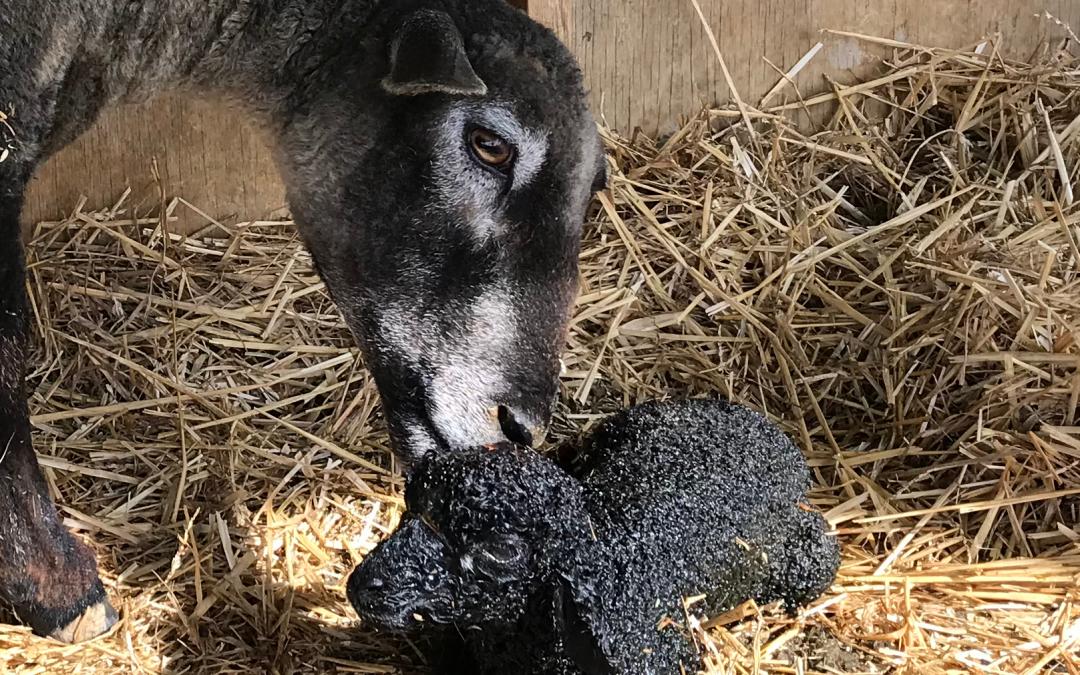May kicks off with the Maryland Sheep and Wool Festival the on first weekend of the month. We are taking sheep this year and we will also be very involved with taking fleeces, supporting the Leicester Longwool display in the breed barn, and selling beer, fleeces, and hides in the farmers market. If you get to the Festival stop by and say ‘Hi.’ We will be in the Farmer’s Market and Angie will have a booth at the end of Barn 3. Stop by and check out her carding machine / demonstration.
Getting sheep ready for the festival is quite a process, starting with teaching them to lead. This starts with getting them in a confined space so you can catch them. Then getting halters on them and letting them get used to the feel so they don’t pull back against pressure. We do this partly by leaving them tied to a fence post for a bit (while supervised) and then tying them together in pairs. That way if they pull they are pulling on each other. We then start with leading in small circle and work up to longer straight lines. All of this, of course, involves lots of cookies!
Lambing time has come – and gone! We only bred 3 ewes this year and have 7 lambs; 5 colored ones and 2 white ones bouncing and racing around. We ended up with 2 sets of twins, and ended with triplets. We have set up the creep feeder for the lambs so they can begin eating grain. This is an enclosed area with adjustable openings so the lambs can get access to the grain, but the bigger sheep can’t. The lambs will get their first round of vaccinations at about 30 days old (mid-May). They are then given boosters 30 days later. (sound familiar?).
In addition to growing lambs May is the start of hay season. The fields have been fertilized and so far, growing weather has been fairly good although still dry. Normally we do our first cutting around Memorial Day. Hay making is really a 4- step process. First the hay is cut. Then it is tedded or basically stirred about to help it dry. It then is raked into windrows so the baler can pick it up and bale it into either small square bales or bigger round bales. Watching the baling is a real treat. Who would think a machine could scoop up the hay, compact it, wrap it in string, tie the string, and (if small square bales), throw it into a wagon – without computers!

